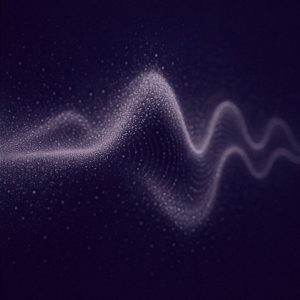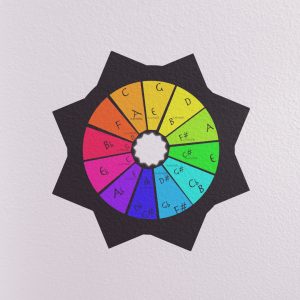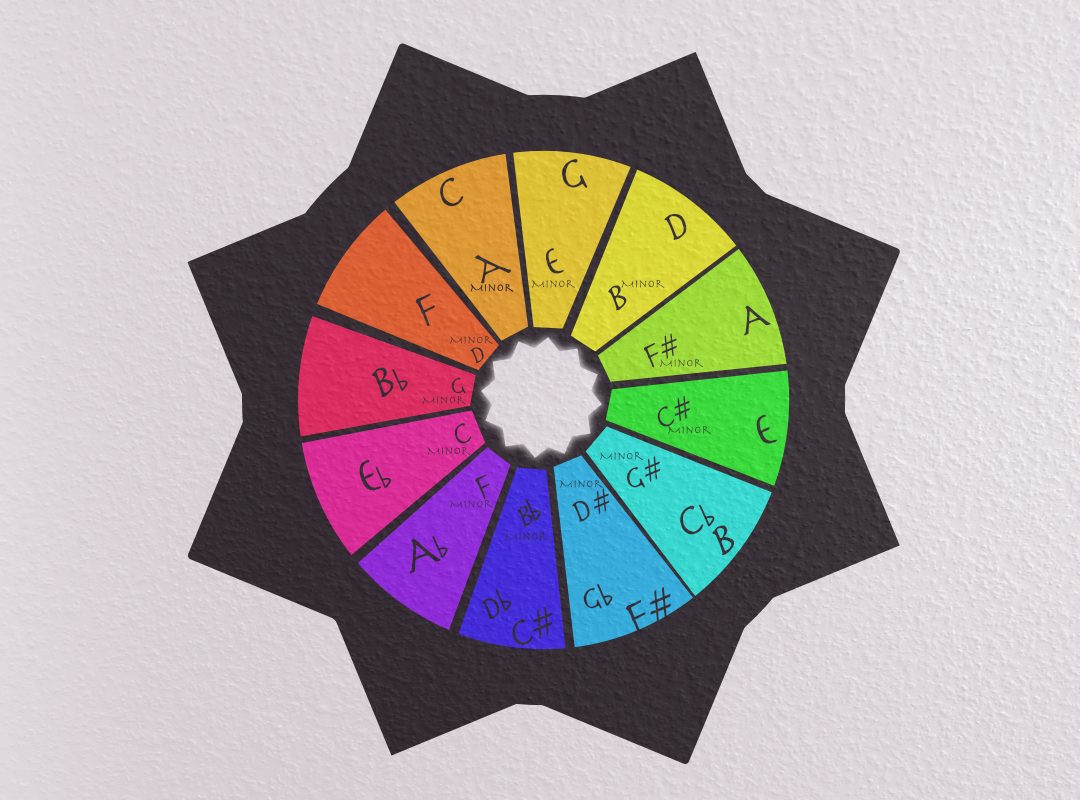The Connection Between Color Wheels and the Circle of Fifths
Music is often thought of as entertainment—something we enjoy, but maybe don’t take too seriously. But when you look closer, music is actually a way of interacting with the physical world. It’s not just emotional or expressive—it’s mathematical. It follows patterns. And those patterns are not random. They’re rooted in vibrations, frequencies, and geometry.
Sound is a vibration. When it moves through air or another medium and lands within the range of human hearing, we experience it as sound. Every object vibrates at its own natural frequency, even if we can’t hear it. And when the right vibrations line up in simple ratios, they create harmony. That’s the basis of music.

These harmonic relationships show up in visual ways too. For example, when you vibrate a Chladni plate (a flat surface covered in sand) at certain frequencies, the sand forms beautiful geometric patterns. That’s because the vibrations create standing waves—some areas stay still, and some move. The sand collects in the still areas, revealing the structure of the sound. Thats because all objects also are vibrating at certain frequencies and can be effected when sound frequencies interact with object, causing object to vibrate, move, and even break… like glass at an Opera house.
What does this have to do with color? Well, color is light, and light is electromagnetic waves oscillating at different frequencies in space to create the colors we see. Sound is a wave of vibration which vibrates at specific frequencies through solids, liquids, and gases to create noise. Light waves and sounds waves have no known physical relationship. However they are both waves, and this may be the reason they have a parrallel relationship.
This is where things get interesting. These visual patterns of sound resemble the kinds of patterns we use to organize color. Think of a color wheel. Now think of the Circle of Fifths in music. They’re both circular systems designed to show relationships—between colors in one case, and between keys in the other.
In music, the Circle of Fifths shows how keys are related through intervals of a fifth. If you move clockwise around the circle, each key is a perfect fifth above the last. Move counter-clockwise, and you’re moving in fourths. The closer two keys are on the circle, the more compatible they sound. The further apart, the more contrast or tension they create.
This mirrors how a color wheel works. Colors that sit next to each other are called analogous—they blend well, just like closely related keys in music. Colors that sit opposite each other are complementary—they create visual tension or energy, like distant keys on the Circle of Fifths do harmonically.

Now, sound and light aren’t the same thing. Sound is a physical wave that needs a medium like air or water to travel through. Light is an electromagnetic wave that can move through a vacuum. But both can be measured in frequencies. And while we can’t directly match a note like “C” to a color like “blue” in any scientific way, there’s a conceptual similarity in how both systems organize frequencies and relationships.
This idea—that harmony in music and harmony in color are reflections of the same underlying patterns—isn’t just poetic. It’s useful. If you’re a musician or designer, thinking about how color and sound relate can open up new creative possibilities. You could design a piece of music that pairs certain keys with certain color schemes. Or you could use color theory as a guide to structure harmonic transitions in your compositions.
When aligning a color wheel with the circle of 4ths and 5ths, I am able to see this parallel relationship by using the notes contained in certain combinations of complimentary couple pairs. I explore this concept in my Youtube video above.
Both color wheels and the Circle of Fifths are tools to make sense of complex systems. They help us find patterns in what we hear and what we see. And the fact that those patterns look so similar might not be a coincidence. It might be a hint that sound, light, and matter are more connected than we tend to realize.
If you found this interesting, feel free to check out my portfolio. I’m available for hire for all your creative, product design, marketing, and branding needs.
Portfolio Link:
https://v0-bjorn-corning-portfolio-6ga26avls-bjorncodings-projects.vercel.app/



